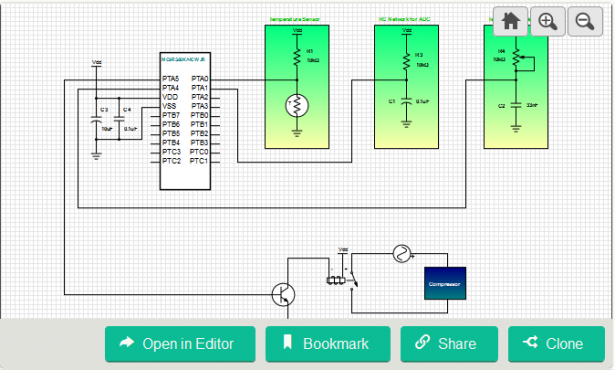This design is a basic temperature control for refrigerators that has an electromechanical circuit. It specifically uses MC9RS08KA4CWJR microcontroller which has an 8-bit RS08 central processing unit, 254 bytes RAM, 8Kbytes flash, two 8-bit modulo timers, 2-channel 16-bit Timer/PWM, inter-integrated circuit BUS module, keyboard interrupt, and analog comparator. This project effectively controls temperature of any device using resistors and capacitors.
The refrigerator temperature control is a basic RC network connected to an I/O pin. A variable resistor (potentiometer) is used to modify the time the capacitor takes to reach VIH and adjusting its resistance varies that time. A basic voltage divider with one resistor and one thermistor is used to implement the temperature sensor. The thermistor resistance depends on the temperature. For each temperature, we have a different voltage in the divider. This value is effectively measured with the Analog-to-Digital Converter (ADC) implemented by software that uses one resistor, one capacitor, and the analog comparator. In addition, VDD and VSS are the primary power supply pins for the MCU. This voltage source supplies power to all I/O buffer circuitry and to an internal voltage regulator. The internal voltage regulator provides a regulated lower-voltage source to the CPU and other MCU internal circuitry.
For more detail: Basic Temperature Control for Refrigerators

